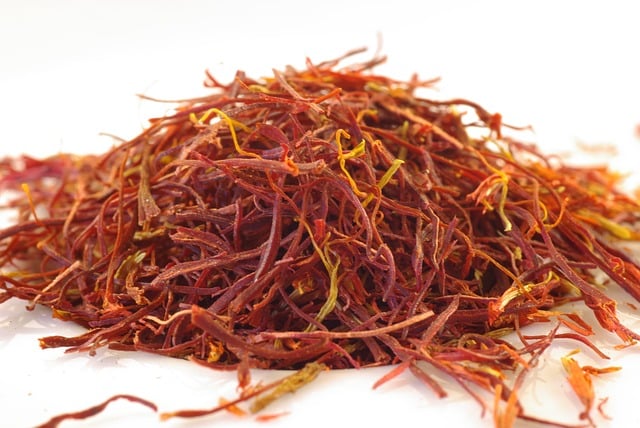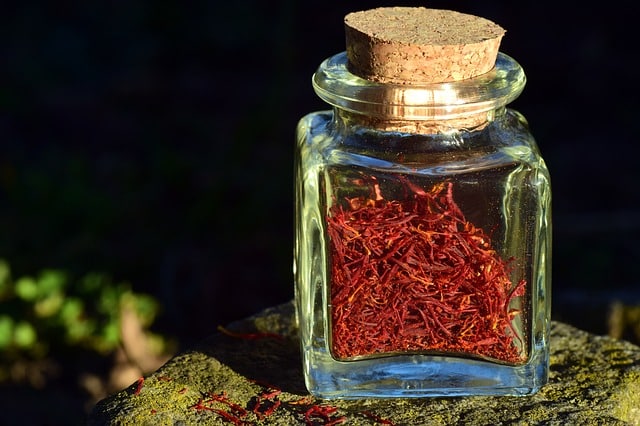
Saffron is sold in threads, in bulk and in jars
Saffron comes from the Hispanic Arabic azza'farán , in turn derived from the classical Arabic za'farān . It is a vegetable that belongs to the Iridaceae family group.
An unmatched spice
Saffron has a tuber-type rhizome; a perigonium with three internal divisions and three external divisions; three stamens; and a stigma that is divided into three. The parts of the stigma , once dried, are used as a spice .
Its gastronomic use is common in many regions. Dishes with saffron are not only characterized by acquiring the aroma and flavor of this spice, but are also dyed golden or yellow due to the presence of crocin , a chemical compound of carotenoids.
To obtain one kilogram of saffron ready as a condiment , about 250,000 flowers of the plant are required. That is why it is a very expensive spice: in fact, saffron is often mentioned as the most expensive spice in the world .
First uses
It is estimated that the first saffron crops were grown several millennia ago. Today it is produced in many Eastern countries , but also in Spain , England , France , the United States and other nations. The largest producer internationally is Iran .
The oldest references to the use of this spice take us to the mid-24th century BC. C., and since then evidence of its use can be found in different fields, from religion to gastronomy , including medicine. Some researchers claim that saffron was widely used in ancient Egypt.
One of the various books of the Tanakh and the Old Testament, the so-called Song of Solomon , which stands out for not belonging to any of the genres used for the other books of the Bible, speaks of a product called Karkom to refer to one one of the most appreciated in nature, and it is known that it is the saffron plant.
We can also find references in the literature of the Greek and Roman empires, particularly highlighting the chromatic and aromatic contribution of this spice in the life of those people. For clothing making, for example, it was used as tinete for party dresses. It was also spread to decorate large celebration rooms and even to fill cushions.
in the kitchen
Many rice and pasta recipes use saffron. The famous Valencian paella , for example, is prepared with saffron, which gives the rice grains a characteristic shade. The preparation known as pepitoria , which is applied to different meats, includes saffron, almonds, egg yolk, pepper and other ingredients. Several types of curries , finally, also feature saffron.

Despite its natural color, it turns foods yellow
Due to its great effectiveness, both in flavoring and coloring food, as well as its high commercial price , saffron is used in very small quantities, which do not reflect at first glance the volume of the dish they flavor. In fact, although it is sold in strands and in bulk, one of the best-known formats is the small plastic bottles that contain less than 5 grams .
Although saffron is associated with savory recipes, we must not fail to mention that it is also used for various sweet dishes, such as creams, in which it mainly provides its characteristic yellow color, which often helps the diner quickly associate its aspect with its main ingredient , such as lemon. One of the most popular desserts in Catalonia, for example, is genestrada , which is prepared with pine nuts and raisins. It is a version of the manjar blanco , although the saffron dyes it yellow.
